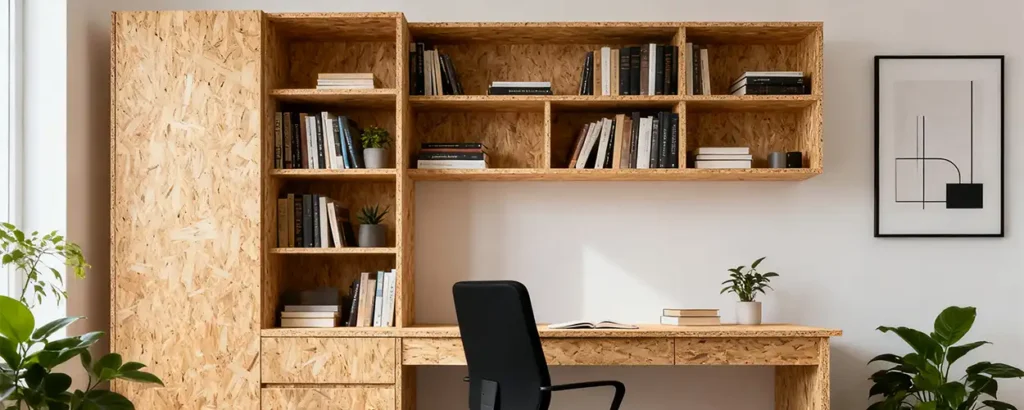OSB (Oriented Strand Board) is a popular building material, but it has a notorious weakness: moisture. Understanding this vulnerability is crucial for any construction or DIY project. This article reveals how moisture affects OSB, causing swelling, delamination, and structural weakness. We’ll show you how to protect your OSB and fix damage, saving you from costly repairs down the line.
Why OSB and Water Don't Mix
The Science Behind OSB's Moisture Sensitivity
OSB might look tough, but its construction makes it susceptible to water damage. The board is made of compressed wood strands bonded with adhesives. While the surface may seem solid, the edges and cut ends are highly porous, acting like a sponge that draws water deep into the panel. Unlike solid wood which can often dry out without major distortion, the engineered layers of OSB swell unevenly. The wood strands themselves absorb water, and the resins used, while somewhat water-resistant, cannot completely seal every individual strand. This leads to the most common visual sign of failure: edge swelling.

Common Signs of OSB Moisture Damage
It’s important to catch OSB moisture problems early. Here’s what to look for:
- Swelling and Delamination: The most obvious sign is swelling, particularly along the edges and corners. As the wood strands absorb water, they expand, causing the panel to thicken and push apart. In severe cases, you’ll see delamination, where the layered strands begin to separate from each other, compromising the board’s structural integrity.
- Loss of Strength: Water acts as a lubricant between the wood fibers and can break down the adhesive bonds. This leads to a significant reduction in stiffness and strength. A water-damaged OSB subfloor or roof sheathing may feel soft or bouncy underfoot—a serious safety concern.
- Mold and Mildew: Persistent moisture creates a perfect environment for mold and mildew to grow on and within the OSB panels. This not only further degrades the material but can also lead to indoor air quality issues and health problems for occupants.
Protecting Your OSB: Prevention is Key
Smart Installation Practices
You can’t change how OSB is made, but you can change how you install it. Proper installation is your first line of defense. Always store OSB off the ground and covered before use to prevent pre-construction moisture absorption. During installation, ensure there is a small gap (about 1/8 inch) between panels to allow for natural expansion without buckling. Most critically, seal all cut edges with a high-quality, paintable latex or acrylic caulk or a specialized edge sealer. This simple step blocks the primary entry point for moisture.
The Critical Role of Weather Barriers
OSB is not a finish material; it is a structural sheathing. It must be protected from the elements as soon as possible after installation. For walls, this means installing a weather-resistant barrier (WRB), like house wrap or felt paper, over the OSB immediately. For roofs, underlayment and shingles are the protection. For floors, a vapor barrier may be necessary depending on the climate and foundation type. The goal is to prevent liquid water from reaching the OSB and to allow any incidental moisture vapor to escape.
OSB vs. Plywood in Wet Conditions
This is a classic debate. While both are engineered wood products, they respond to moisture differently. Plywood is also susceptible to water damage, but it tends to dry out more effectively and can sometimes return closer to its original shape. OSB, once swollen, often retains its deformed state even after drying. However, it’s worth noting that modern OSB, especially types like OSB/3 or Advantech, are manufactured with improved, moisture-resistant resins. These products are designed to perform better in damp conditions and during construction-phase weather exposure, often boasting longer exposure warranties.
Repairing Water-Damaged OSB
So, what if your OSB is already wet? The repair strategy depends on the extent of the damage. For minor edge swelling that hasn’t compromised the structure, you can let the area dry thoroughly and then sand the swollen edges flat. However, if the OSB is soft, shows significant delamination, or has mold growth, replacement is the only safe and reliable option. Cutting out the damaged section and splicing in a new piece of OSB (with proper sealing and support) is the best way to restore structural integrity. Remember, painting over a moldy or structurally weak OSB panel is just hiding a problem that will only get worse.

